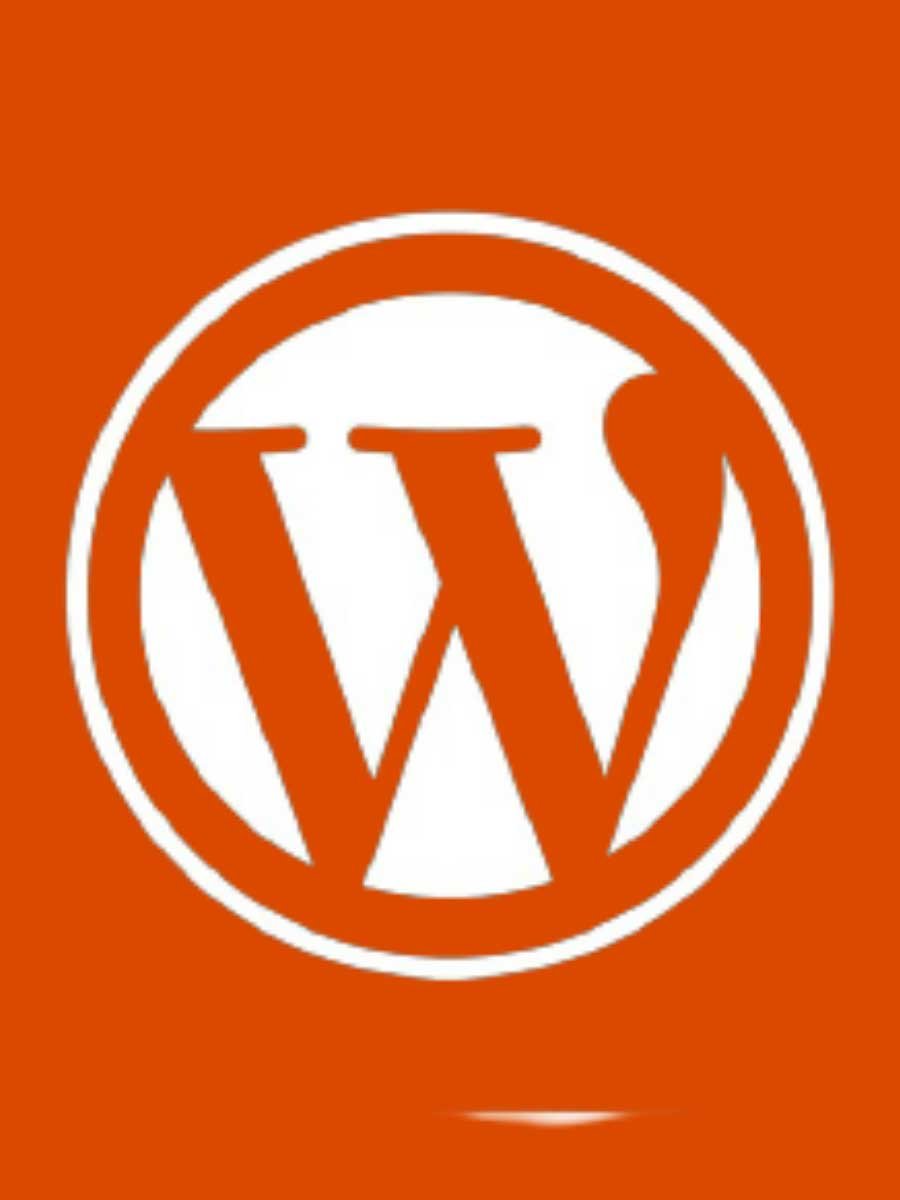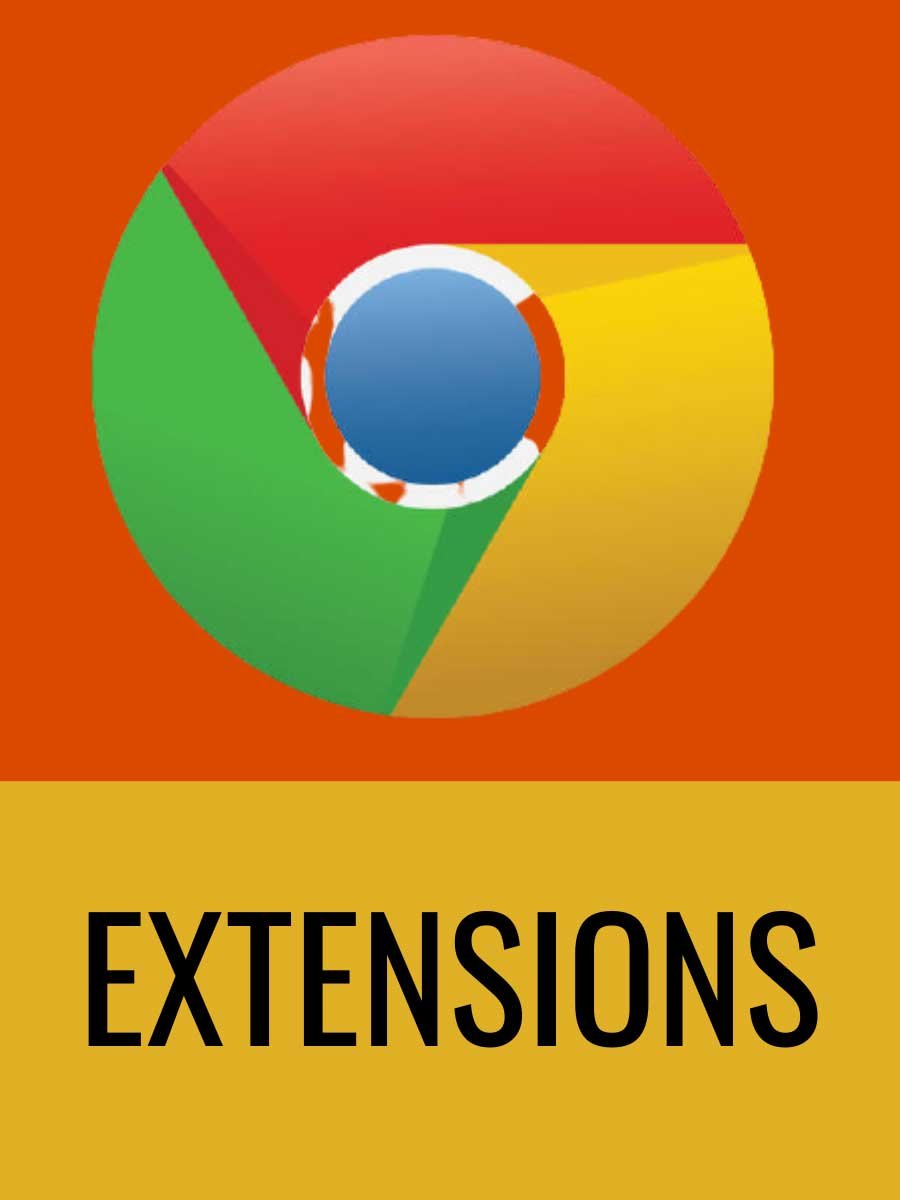10 Things You Need To Do Immediately After You Install WordPress

Have you just completed the five minutes process of creating a website for your business provided in how to build a WordPress website/blog in under one hour post?
If that is the case, am so happy for you. But now, what next?
It is easy to create a website for your business, but learning how to use WordPress dashboard and other settings require some commitment and learning.
You do not have to worry or get freaked out by this because I have compiled a list of 10 things you should do after installing WordPress to get you started on your journey of learning how to use WordPress.
Want to books that will teach you how to use WordPress like a pro? Consider these two below:
Learn WordPress: Beginner’s Visual Guide
Learning WordPress For Beginners
| Recommended Readings….. |
Disclaimer
This post might contain affiliate links. I may earn some commission if you click on such links. You shall not incur any extra cost if that happens. Please read our full affiliate disclosure here!
WANT A CHANCE TO MAKE SOME EXTRA CASH? Sign up with Survey Junkie to do quick surveys paying more than $50 daily. Alternatively, you can even use Swagbucks to get paid to do regular everyday tasks like watching videos and searching the web! |
10 Things You Need To Do Immediately After You Install WordPress
1. Change the Site Title, Tagline and Timezone
This step will teach you how to use WordPress settings tabs to control certain designs on your website.
To change site title, tagline, and timezone go to Settings > General option Site title and tagline are a summary of your business purpose.
The site title in most cases should be the name of your online business, such as SproutMentor.
The site tagline is a brief description of the aim of your website, such as to offer guides on starting an online business to beginners.
Do not forget to confirm if the email address and website URL are correct while in these general settings.
Next, you need to set the right timezone that marches your current location.
This is important because it will help to accurately carry out several tasks in your WordPress dashboard, such as scheduling posts.
Click on the “Save Changes” button after you are done making all the changes in the Settings general tab.
If you prefer video follow this link: Change site title and tagline in WordPress
Recommended reading: How to write better site titles and taglines for WordPress.
2. Change the Default “Admin” Username
I would not want you to learn how to use WordPress and build a killer website only to fall victim to hackers.
This setting will protect you from malicious insecurity issues targeted towards your site.
When you install WordPress, the default username is “admin,” and this need to be changed to something people cannot guess to reduce the success of bots attacks and login attacks.
For security purposes, you need to change this to either your business name, personal name or any other name that fits the aim of your business.
To do this, go to Users > Your Profile.
In this page, you can also change other settings, such as social media profile, password, provide a brief description of yourself, your site email and different SEO settings.
You can also add a new user profile by going to Users > Add New.
Fill out all the details and click on the button “Add New User” to save changes.
If you prefer video follow this link: Why and how to change Admin Username.
Recommended reading: 20 extra tips on how to secure your WordPress website
3. Change the Permalink Structure
This WordPress setting will define the structure of your URLs.
Cute and readable URLs can increase click-through-rates in your content.
Additionally, it is a good SEO practice to have well-structured URLs to encourage search engines to scroll your site.
As you research more on WordPress, you will come to understand that SEO knowledge is a must-have skill on how to use WordPress learning curve.
SEO involves all the on-page and off-page activities you carry out on your site to improve user experience and discoverability by search engines. If you want free traffic to your website, then SEO is a must-have strategy. See examples below;
Good URL: http://www.microsoft.com/downloads/
Bad URL: http://www.familyID=0b88ccbf-4c52-4347-aa71-87184a13ac1c&DisplayLang=en
In the first URL, you can tell that the post is about Microsoft downloads, but the second URL is hard to read, and one cannot even tell what the information in that page/post.
The most recommended SEO-friendly permalink structure is “Post Name.”
To change it go to Settings > Permalinks Check the radio button next to the Post Name option and then click on “Save Changes” button to complete the process.
If you prefer video follow this link: How and why change WordPress permalink structure
Recommended reading: The perfect SEO permalink SEO structure
4. Configure the Reading Settings
I believe that your primary aim of learning how to use WordPress is to create a site that is user-friendly and attractive in the eyes of your target customers.
If so, this setting will help you to determine what will be displayed on your website front page, such as blog posts page, homepage or any other page on your site.
For example, it is logical for a blogger website to have the blog page as the front page, while a company website should use the home page as their front page.
A front page is a page that your site readers or customers encounter first when they visit your site.
To make these changes go to Settings > Reading
On this reading setting window, you can also discourage search engines from crawling your site until you finish building it by ticking on the box next to “Discourage search engines from indexing this site” option.
If you prefer video use this link: WordPress reading setting walkthrough
Recommended readings: Why you should and how to configure WordPress reading settings.
5. Configure the Discussion Settings
As you continue to learn how to use WordPress you will notice that out of all the settings tabs in WordPress, the discussion setting tab has the most comprehensive list of options to configure.
These settings will help you to define several guidelines related to discussions on the content on your sites, such as comment settings, article settings and gravatar settings among others.
For example, do you want people to post comments on new blog posts, should this be automatic or should you approve every comment manually, do you want to be notified every time someone comments, do you want them to input an email and name before they comment?
In most cases, the default settings are good to go with, and you do not need to change anything on this tabs.
However, if you prefer to change you can read through every option and check all the boxes close to the option you want to keep or un-check those with the option you do not want to keep as explained in this guide.
In summary, the options you choose differ from one site to the next because it all depends on your preference and site purpose as explained in the video link attached below.
If you prefer video follow this link: WordPress discussion settings walkthrough
Recommended reading: How to configure WordPress discussion settings.
6. Install a Theme
To help you learn how to use WordPress the right way, let us break down this topic on WordPress themes into several important discussion as discussed below:
a) Types of WordPress themes
There are two main types of WordPress themes: Free and Premium/paid.
A free theme is available for use without paying a single cent to access it.
There are many places you can download free WordPress themes, such as WordPress.org theme directory and FreeWPthemes among others.
The advantage of using free themes is that you incur no cost, you can quickly change to another, and there are many options to choose from out there.
However, the disadvantage is that most are bloated and bad for SEO due to uncorrected bugs, they lack support, and have limited customization options.
This is not to say that all free themes are bad, NO! NO! There are many good ones out there, but you will need to do in-depth research and analysis or get trustworthy recommendations before finding one.
On the other hand, a paid or premium theme is one that you will need to pay for before you can download or use it on your website.
No theme is perfect, and this is why the most significant advantage of premium WordPress themes is that there is an active support team behind the scenes working hard on a daily basis to improve its functionality and correct and remove any production bugs and imperfections.
Also, a paid theme has a wide range of features, which will give you more flexibility in the customization options allowing you to build unique sites.
You can avoid frustrations of not getting your needs meet or begging from scratch by choosing the right theme. Recommended readings: Free vs Paid themes (Pros and Cons)
b) Which theme do I use?
From the image above you can tell that Sproutmentor uses Divi premium theme from Elegant themes marketplace.
I love Divi because it is highly customizable, multi-purpose meaning that you can build any website with it and the team behind it actively updating it for future effectiveness.
To cut a long story short, there are plenty of reasons why Divi is an excellent WordPress theme as explained in this review 20 reasons why I love Divi.
In order to pass the new Google Core Web Vitals requirement, I had to change from the Divi Theme To Trellis Theme by Mediavine, which is more optimized for ad revenue and speed.
C) What factors should you consider when choosing a WordPress theme?
Simplicity: Avoid complex layouts, too many colors and over-complicated navigation architecture.
Purpose: Every theme is designed to serve a specific purpose. For example, some are for blogs, others for e-commerce sites, and others for education sites among others. For this reason, choose the theme that matches the purpose of your online business.
Responsiveness: The layout of the theme must be adjustable to different screen sizes, such as mobile, desktop and tablet among others.
Compatibility: The theme must be compatible with resources in the WordPress ecosystem, such as plugins.
Support: Anything can happen, and it does happen. For this reason, choose a theme with a present support team who can help you solve any arising issue.
SEO friendliness: Some themes are too heavy or have too many errors in the code such that they will compromise the SEO of your site.
Customer Ratings and reviews: Look at the remarks and recommendations other customers have left about the theme. Trustpilot is one of the most extensive review community you can find some of these reviews.
Choose based on the test theme result: You can test a theme with several plugins, such as Theme Check before you can use it or use it in a staging environment to see how it performs.
d) How do you install a WordPress theme?
Enough with the theoretical notes above, let me bring you back to the practical part of learning how to use WordPress.
To install a WordPress theme go to Appearance > Themes
Important Note: Before adding any theme, delete all the default themes you find in this area by clicking on the link “theme details” and then on the “delete” link below the theme details page, and finally select “OK” to finalize.
After you have deleted all the defaults themes, which come pre-installed in WordPress, it is time to add a new theme.
To add a new theme go to Appearance > Themes > Add new
You will be redirected to a page with all the themes. You can use the filter options to choose the best theme, or if you know the name, type it in the search bar to find the theme.
Also, if you bought a paid theme, you can add to your site by clicking the “Upload Theme” button.
After you find the theme which suits your needs best or upload one from your computer, click on the “Install” button then “Activate” on the new window that appears.
If you prefer video use this link: How to install a WordPress theme
Recommended reading: The ultimate guide to WordPress Themes
WANT A CHANCE TO MAKE SOME EXTRA CASH? 1. This nine-figure proofreader is teaching interested candidates how she build a nine-figure income proofreading business in this FREE 76-Minutes Workshop. Read more about this opportunity on this post. 2. She makes $300 daily on Pinterest! Learn how you can make money pinning on Pinterest on this FREE Training. Read more about this opportunity on this post. 3. This Turker manages to make more than $1000 every 30 days. He is teaching how you can make $50 daily as a micro-worker online on this NEW Book. Read more about this opportunity on this post. |
7. Install Recommended Plugins
I do not want to lose you on this journey of learning how to use WordPress, and this is why I will break this section into two parts:
Part one: 10 WordPress Recommended Plugins
i) Install an SEO plugin
Recommended: Yoast SEO
I know you want free search engine traffic to your website.
If so, SEO must be your friend in this journey of acquiring knowledge on how to use WordPress.
An SEO plugin, such as Yoast will help you to set meta descriptions, title tags, sitemaps and many other settings.
If you prefer text, this article a complete Guide to Yoast SEO will help you understand how you can take control of SEO on your WordPress site with Yoast.
If you prefer video follow this link.
Alternatives to Yoast SEO would be All in One SEO Pack and SEO Framework. See a detailed comparison of the three here.
ii) Install a security plugin
Recommended: Wordfence Security
I know you do not want to invest so much energy, resources and time on your site only for that to be enjoyed by someone else or lost all in vain due to a malware attack.
A security plugin will monitor your site and notify you before a malicious activity, such as a forced login attempt or hacking, is successful.
You can further secure your WordPress admin area by implementing these 14 tips.
Read this article if you want to discover other 17 WordPress security plugins.
iii) Install a backup plugin
Recommended: UpdraftPlus
Imagine losing all information on your site after all the handwork? Traumatizing right?
Save yourself the trouble of starting from scratch on how to use WordPress by scheduling regular backups with a backup plugin.
This will help you to restore everything back in case any instance of loss takes place on your site.
You can find other 7 WordPress backup plugin alternatives in this article.
iv) Install a anti-spam plugin
Recommended: Akismet
Who likes to be spammed? I don’t, and I know you don’t like it too.
The bad news is that there are people out there who have made this their mission.
This will not only mess things up for you on your site, but it is terrible for SEO.
Save yourself the headache of having to deal with all that by installing an Anti-spam plugin, such as Akismet.
If you want to find other 10 Anti-spam WordPress plugins visit that link.
v) Install a cache plugin
Recommended: W3 Total Cache and WP Super Cache
Speed is everything on any website on the internet.
Low load times produces higher bounce rates and discourages visitors on your site.
To avoid losing your customers, you need to install a cache plugin, which helps to speed up your site.
Caching helps to speed up your server load time, by taking care of all the technical stuff for you in the background as you focus on other activities in your path of learning how to use WordPress.
You can find other 9 WordPress cache plugins in this article.
vi) Install an analytics plugin
Recommended: Monster Insights
This plugin will help you carry out and see Google analytics data directly on your WordPress dashboard.
It gives data related to who are your audience, their needs, and other demographic information.
To understand what is Google Analytics and why it is crucial to your site read these two articles How to install Google Analytics in WordPress and How to analyze data in Google Analytics.
You can find other WordPress Analytic plugins in this article.
vii) Install a social sharing plugin
Recommended: Monarch and Social Warfare
You want to make it easy for your audience to share your site and its content on social media networks, right?
Do you want to be able to help your audience to follow you on your various social profiles?
Then you do not have to wait until your site to get traffic to install a social media sharing plugin that will help you achieve this and many more.
I use Monarch from Elegant themes, and I love it because it is clean and beginner friendly.
View a Live demo of Monarch and discover more fantastic Monarch features.
viii) Install an optin form plugin
Recommended: OptinMonster and Bloom
I know you want to convert your website visitors into email subscribers and buyers, right?
To do so, you must have an option-form, which appears every time a visitor comes to your website.
WordPress Optin-form plugins will help you to create eye-catching and appealing forms where your website visitors will access a free guide in exchange for their email addresses.
Optin forms can increase your conversion and customer base by a large percentage, and you need this to make money online in your online business or website.
I use Bloom from Elegant themes, and I love Bloom because it is easy to use, has many free templates and allows flexibility in adjusting customization options.
It will also give you statistics on your View a Live Demo of Bloom and discover more fantastic Bloom features.
ix) Install a redirect and 404 error plugin
Recommended: Redirection
Redirects and 404 error are very harmful to SEO if not done right, and this can slow down your success in learning how to use WordPress.
These plugins come in handy when you change post and page URLs or when pages on your website cannot be found.
To avoid frustrating your website visitors with broken and non-found pages, you should redirect old/changed URLs to new ones using a plugin.
Visit this two articles to read more on redirects and 404 errors, also check out other 5 WordPress redirect plugins by following that link.
x) Install an image compression plugin
Recommended: Imagify and EWWW Image Optimizer
Large, unoptimized photos are bad for SEO because they slow down a website.
A slow website losses customers because not everyone is patient enough to wait for it to load fully.
I am sure you did not struggle this must to learn how to use WordPress only to lose those customers due to poor mistakes, such as reduced load times.
WordPress Image optimization plugins will compress your images and reduce them into smaller sizes to improve your page loading speed.
Recommended readings: 5 tools for preparing your images for the web and the Ultimate Guide to WordPress images optimization.
Part Two: How to Install a WordPress plugin
I hope that the theory part above has been informative to you, now let’s come back to the practical part of learning how to use WordPress.
Before you can install any plugin, you need to delete default and unused ones, which come pre-installed in WordPress.
Having too many unused plugins can slow down your site, so you need only to keep those that are necessary.
For example, if you followed this step-by-step guide for creating a website that I wrote in the last post, you will notice that the Mojo Marketplace plugin from Bluehost will be in the list of installed plugins by default.
To delete a plugin, go to Plugins > Installed Plugins, and click on “deactivate” it first then “delete” it.
After you have deleted all the unnecessary plugins, you are ready to install the ten recommended plugins explained above.
To install a new plugin go to Plugins>Add New then click on the “Install Now” button and finally “Activate.”
Before you choose a plugin, you need to look at the customer reviews, the number of active installations and when it was updated last as the things to consider before installing a plugin.
After you install your desired plugin, you can keep the default settings or go to Plugins> installed plugins > settings to make any changes you want on the default settings.
If you prefer video follow this link: A beginners guide to installing a WordPress plugin.
Recommended readings: Ultimate Guide to WordPress Plugins
8. Add posts and Pages
To simplify the process of learning how to use WordPress the right way for you, I am going to break down this section into four parts as shown below.
What is the difference between posts and pages in WordPress?
Pages are static content entry points, such as home, about, services and hire me pages.
These are good for content without a time value and does not need regular updates.
On the other hand, posts are blog updates that are arranged in chronological order from the latest to the oldest.
These change because a blog must be updated regularly. To understand how to use WordPress posts and pages effectively, follow this link Posts vs. pages to learn more.
Quick Tips
Use builders: Drag and drop Page builders, such as Divi builder, Beaver, and Elementor among others will make life easy for you. To create beautiful posts and pages, you need to learn some coding and programming languages. These builders will save you this because they have pre-defined templates and modules that you can drag and drop where you want and fill in content. I use the Divi builder from Elegant Themes, and it is beginner friendly see a demo in this video create a page with Divi builder. View a live demo of Divi builder
SEO your posts and pages: Learning to use WordPress the right way means thinking about SEO is everything you do. Use these guides: Optimizing SEO with Yoast plugin, Keyword research, on-page SEO, off-page SEO to learn how you can optimize your posts.
Optimize images: Before you upload any picture to your site make sure it has the right size, file format and title/ alt text tag a process called optimizing images for SEO.
Learn the WordPress editor: The best way to learn how to use WordPress is to master all the shortcuts and quick tips you can utilize in the WordPress editor.
9. Set WordPress Menus and Widgets
Let me help you maximize your efforts of learning how to use WordPress by breaking up this section into three parts.
What is the difference between WordPress menus and Widgets
Menus are navigational links that help users to move around your site, while widgets are containers that pull together common content that is put in certain areas of your site, such as recent posts on the sidebar.
10. Brand your site
There are several ways you can do to brand your WordPress site so as not to look like a beginner in your process of learning how to use WordPress.
I have included a link to a detailed guide that will show you how to complete each activity.
Remember you should always try to stay on the branded image on other profiles, such as social media networks and product sales pages among others.
Add a favicon: Use this article how to add a Favicon to your WordPress website to complete this step.
Add a logo: Use this article how to add a logo to your website to complete this step.
Have a color scheme: Use this video to learn how to complete this step.
Create your gravatar: Use this tutorial from WordPress to complete this activity.
Typography: This has everything to do with font types and sizes. Gather a few tips from this article that will help you to brand your site.
Maintain design consistency: Where you can use the consistent design for your pages and posts instead of changing every time you create something new.
Bonus tip 11: Optimize for Search Engine Optimization (SEO)
If you are so serious and determined to learn how to use WordPress efficiently the right way, you need to go a step further and learn SEO.
SEO is the process of making a website rank higher in search engines, which results in free traffic to that site.
Thus, it involves all the activities of making a site more crawlable by search engine through ensuring that it meets all the search and ranking algorithms used by search engines.
Why is SEO important on a WordPress site?
- Source of Free traffic from search engines
- Improves usability of a website, which increases brand loyalty and sales.
- Puts your business ahead of competition
- Better SERP rankings equals high brand authority, customer loyalty and credibility.
How do you optimize a WordPress site for SEO?
- Use an SEO plugin, such as Yoast SEO
- Use keyword research best practices
- Carry out on page SEO best practices, such as write good content, use friendly URLs and image optimization among others, consistently in everything you do on your site
- Take your SEO game to the next level by doing off page SEO best practices, such as link building and content promotion among others.
10 Things You Need To Do Immediately After You Install WordPress Conclusion
Now it’s is over to you! I hope that this guide has helped you to get started on your journey of learning how to use WordPress and growing your online business.
If you have not created a website visit this guide (How to Create a Website in 2018 the right way) and do so today.
Remember getting better results in your online business will depend on your consistency, patience and doing the right things as explained in this post and other guides provided related to the topic of how to use WordPress.
Want two books If you liked the post feel free to leave a comment asking a question, adding some information I left out or even better make a suggestion of a guide you would like me to prepare in future.
| Recommended Readings….. |
WANT A CHANCE TO MAKE SOME EXTRA CASH? Get Paid To Click Ads @ StarClicks Get Paid To Play Free Online Games @ Swagbucks Get Paid To Read Emails @ InboxDollars Get Paid To Share Your Opinion @ SurveyJunkie Get Paid To Do Micro Jobs @ PicoWorkers Get Paid To Take Photos @ ShutterStock |







Hey Hildah
Thank you so much for this such a great informative article. This is very helpful for the beginners even some expert escape those step after installing the WordPress. Keep writing
Cheers
Thank you for appreciating the article. It is sad that most people ignore setting up WordPress right from the beginning. I really loved your website and there is too many guides in there for beginners on WordPress. Keep up the good work over there, you just got a new fan.
Cheers.
5
Thank you admin for your helpful guidelines.